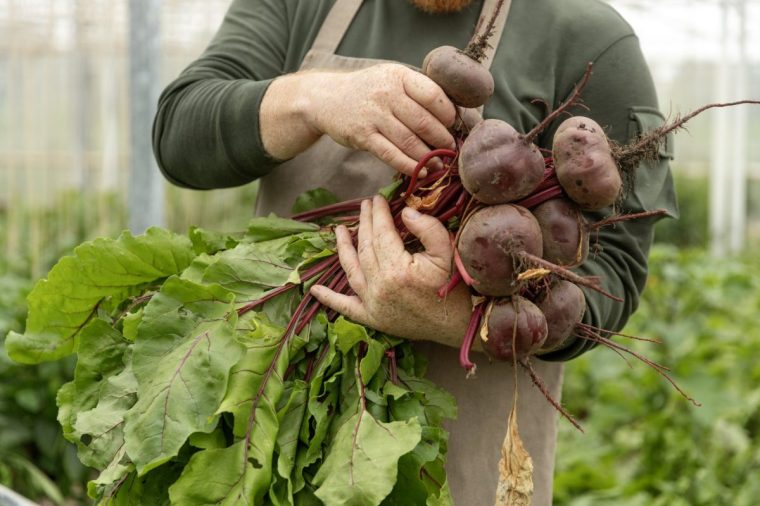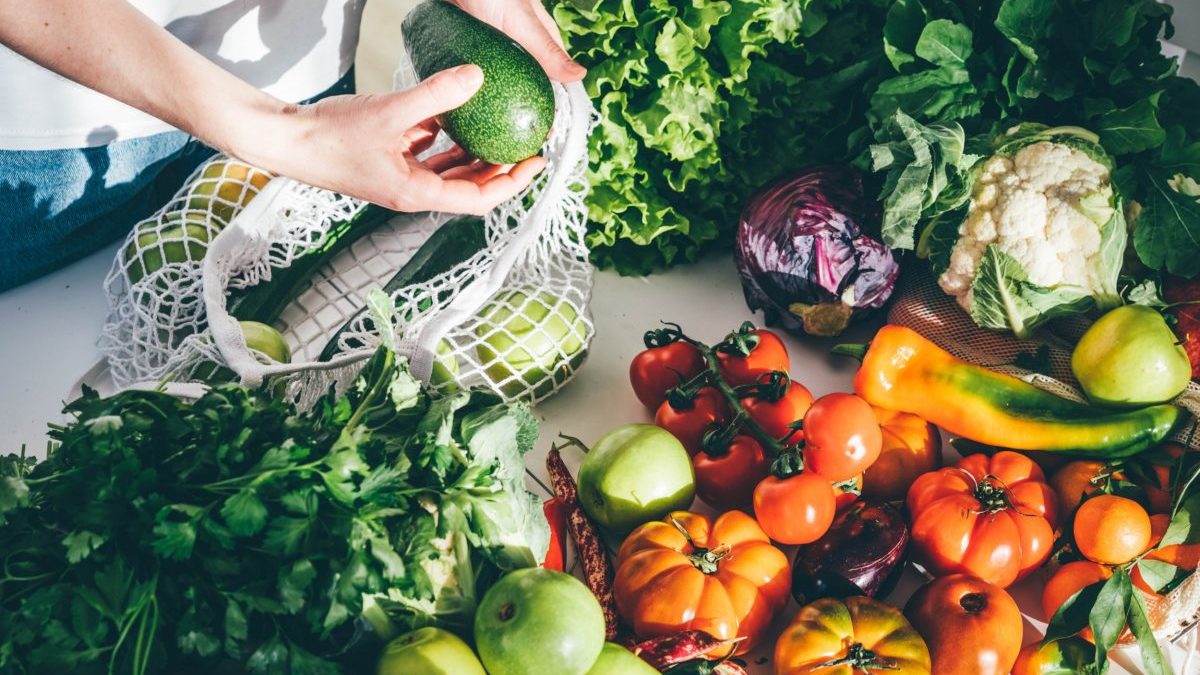Lettuce and cucumber are the lowest in nutrients and fibre – while broccoli is a health powerhouse
As British farmers warn over a potential broccoli shortage due to harvests affected by the ongoing heatwaves in the UK, we may soon be seeing smaller shapes and sizes of our beloved florets, cabbages and cauliflowers on shelves.
With this in mind, we asked Samantha Gill, a specialist gastroenterology dietitian and spokesperson for the British Dietetic Association, for her pick of the healthiest veg. There’s no such thing as an ‘unhealthy vegetable’ of course, but some veggies pack more of a nutritional punch than others in terms of their fibre, vitamin and mineral profile, Gill explains.
She adds that there is little difference, nutritionally-speaking, between fresh and frozen vegetables, which are often more affordable and convenient to cook with. “Frozen vegetables are considered just as nutritious, and sometimes even more so than fresh vegetables as they are usually picked at peak ripeness, processed, and frozen within a few hours, which helps preserve the nutrients,” she says.
Also consider how you cook your favourite veggies, as certain methods can affect the levels of vitamins, minerals and plant chemicals (such as polyphenols) they retain. “The amount of water you use, the amount of heat you use, and the length of time you cook your veg can impact their nutritional value,” Gill adds. So it’s worth doing some research into how best to prepare it.
Here are 10 of the best, and a few that you could take or leave.
1. Broccoli
Potential shortages really are bad news, as broccoli tops our list of the healthiest veg, thanks in large part to research that suggests it may have anti-cancer benefits. Increasing your intake of broccoli, along with other cruciferous veg, such as cauliflower, cabbage, and Brussel sprouts is a good idea – though we should add that in larger servings, some cruciferous veg can upset sensitive digestive systems.
“This vegetable group is unique because they contain distinctive sulphur-containing plant chemicals called glucosinolates,” Gill says. Studies have found that broccoli has potential cancer-preventive effects with increased consumption associated with a decreased risk of cancer, such as stomach and colon cancers.”
Broccoli is also a good source of soluble fibre, with one cup offering around 5g of fibre.
Nutritionally-speaking, regular broccoli florets and tenderstem are similar, Gill says, though the latter, while usually more expensive, is preferred by some for its less bitter taste. Purple sprouting broccoli, meanwhile, contains the added benefit of anthocyanins, a type of polyphenol with potent antioxidant properties (and which gives it its colour.) Whatever type you choose, be sure to eat the stalks which contain plenty of additional nutrients.
2. Spinach
Spinach, often described as a ‘superfood,’ belongs to the amaranth family, which interestingly also includes beetroot, Swiss chard and quinoa. The leafy green is widely considered a nutritional powerhouse due to its rich vitamin and mineral profile, which includes vitamins A, C, K and folate, iron, magnesium and potassium.
“Spinach contains high concentrations of nitrates which may have potential cardiovascular health benefits and, like other leafy greens like kale, is a great source of the carotenoids lutein and zeaxanthin, known for potent antioxidant and anti-inflammatory properties,” Gill explains.
“Of all the carotenoids, these are the only two that accumulate in the retina and lens of the eye and evidence suggests they play a unique role in eye health. It’s thought that lutein and zeaxanthin protect the retina and lens and delay the progression of eye diseases such as age-related macular degeneration and cataracts. Epidemiological studies have observed a lower risk of age-related macular degeneration with higher intakes of carotenoids.”
It’s estimated one cup of spinach can meet your daily recommended intake of vitamin K, which is important for things like blood clotting, wound healing and, potentially, bone health.
3. Avocado
While technically a fruit, we’re including the millennial favourite as they are often treated like a vegetable and eaten in a savoury context. Gill explains that avocados stand out because they are “much higher in unsaturated fats – or healthy fats – compared with most other vegetables.” These include monounsaturated fats (predominantly oleic acid) with smaller amounts of polyunsaturated fats, which are important as they can help you maintain healthy cholesterol.
Avocados are also a great source of fibre. “The average avocado portion (around 68g or one half) provides around 4.5g of fibre, as well as being a concentrated source of vitamins and minerals,” Gill adds. “Fibre makes up most of the carbohydrates in avocados – a whole avocado contains only 17g of carbs, of which 14g is fibre. They also contain vitamins A, C, E, K and B vitamins (including B6, folate, niacin), as well as key minerals including calcium, potassium, phosphorus and magnesium.”
4. Carrots Carrots are a healthy source of Vitamin A
Carrots are a healthy source of Vitamin A
Carrots are known for being a rich source of beta-carotene – “that the body easily converts to vitamin A,” Gill says. “Vitamin A has several important functions, including maintaining healthy skin and vision, as well as immune function. Vitamin A can influence both innate and adaptive immunity and plays a key role in regulating immune defence.”
Sweet potatoes are another excellent source of beta-carotene. Cooking both carrots and sweet potato may help with the absorption of beta-carotene.
Two medium carrots provide around 5g of fibre. They are also a source of vitamin C and the antioxidants lutein and zeaxanthin which protect against age-related macular degeneration.
5. Onions
Onions are highly nutritious and have antimicrobial, anti-inflammatory, and immune modulating properties, according to Gill. “Quercetin (a flavonoid) in onions has been shown to possess high antiba cterial activity and inhibit the growth of several types of bacteria, as well as fungi and viruses.” Research suggests red onions may contain slightly more quercetin than white onions.
Onion consumption has been associated with improved bone health and less risk of fracture. A 2009 study of women over the age of 50 published in the journal Menopause, found that those who ate onions once or more a day had better bone density than those who consumed onions once a month or less.
Onion is considered a prebiotic, which feeds the good bacteria in our guts, though some people with sensitive systems, or those with IBS, find eating too much onion can trigger discomfort.
6. Tomatoes
Lycopene is a carotenoid found in high concentrations in tomatoes, which is known for its powerful antioxidant properties, Gill says. “A recent review of 21 studies found that adding in tomato products (whole tomatoes, tomato paste, tomato juice) or supplementing with lycopene can help to prevent UV light damage and improve the appearance and pigmentation of the skin,” she adds. “Eating tomatoes isn’t a substitute for suncream, however, it could be an additional tool to help protect against the damaging effects of the sun.”
Tomatoes are also rich in vitamin C, “which acts as an antioxidant to protect cells against free radical damage,” she explains. “Free radicals damage components of cells, including their DNA. Antioxidants neutralise free radicals (a natural byproduct of cell metabolism).”
Cooking tomatoes with olive oil can increase the availability of lycopene, though it may also decrease the levels of vitamin C (so both raw and cooked tomatoes deserve a place in your diet).
7. Garlic
Whether you class it as a herb or a veggie, eating garlic regularly is associated with a range of health benefits, spanning heart to joint health, while many of us turn to it to help banish pesky colds. Recent research suggests it may even have neuroprotective powers, according to Gill.
“Clinical studies have shown that garlic can have a positive effect on metabolic health, including improvements in cholesterol levels and blood pressure, whereas observational studies have linked garlic consumption with a lower risk of certain cancers,” Gill says.
“Garlic is rich in sulphur-containing compounds (such as allicin, alliin, diallyl sulfide) which are thought to play a key role in protecting neurons (nerve cells), with growing evidence suggesting these compounds have protective effects against neuroinflammation and neurodegeneration.”
Like onion, garlic is also a prebiotic which for some people may trigger IBS-like symptoms in certain quantities, so it’s wise to be aware of how much you can comfortably tolerate.
8. Courgettes
The humble courgette, more glamorously known as a ‘zucchini’ across the pond, is low in calories and has a high water content (around 95 per cent), while offering a source of both soluble and insoluble fibre, meaning it’ll help keep you hydrated and help prevent constipation – but the benefits don’t end there. “Courgettes are also a good source of the carotenoids lutein and zeaxanthin which have anti-inflammatory and antioxidant powers and may support eye health.”
Their mild flavour and quick cooking time make courgettes a versatile veggie for packing into pastas or stir-frys – or substitute noodles entirely with zucchini noodles, also known as ‘zoodles.’
9. Beetroot Beetroot can help to boost our energy levels
Beetroot can help to boost our energy levels
“In recent years, the pigments – called betacyanins and betaxanthins – found in beetroot, have gained attention for their health promoting potential,” Gill says. “Betacyanins make up 75–95 per cent of beetroot pigments, the remaining 5–25 per cent are betaxanthins. Evidence suggests these pigments might help reduce inflammation and have potential in metabolic health, including glycaemic control, management of cholesterol levels, and blood pressure.”
On social media, drinking beetroot juice, or ‘beet juice,’ has become popular for its potential links with enhancing energy levels, performance and recovery (as well as some questionable other claims) – is there any truth in this? Gill explains that beetroot is a rich source of nitrate and that some studies in athletes using beetroot juice in particular, “have shown performance improvements, such as muscular strength.”
Eating beetroot whole, rather than juicing will give you more fibre.
10. Peas
While strictly classed as a legume, green peas have been linked with various health benefits including cardiovascular health, Gill says. “They are both a good source of plant-based protein and fibres, such as resistant starch and pectin, and are naturally packed with flavonols, carotenoids, as well as vitamin C,” making them a wise, cheap and convenient freezer staple.
11. Iceberg lettuce, cucumber and celery
While there’s no such thing as an unhealthy vegetable, iceberg lettuce, cucumber and celery offer some of the least nutritional value in comparison to other veggies, according to Gill.
“These vegetables are low in calories and have a high water content but they contain less fibre, vitamins and minerals.” Iceberg lettuce is not as nutrient-dense as other leafy greens. That’s not to say it can’t have a place in a balanced diet – no one can deny it’s a crisp addition to homemade tacos, but there are more healthful alternatives, like rocket or kale or spinach.
Crunchy veggies like celery and cucumber are other examples – though chomping on them is said to be great for your teeth, and there’s no question they serve as a healthier (and hydrating) snack over, say, crisps with hummus, or that they make a great base for your spag bol.
It’s just that, if these were the only vegetables you were eating in a day or week, you’ll likely be missing out on some important nutrients and vital sources of fibre, making it hard to meet your recommended 30g of fibre a day.
